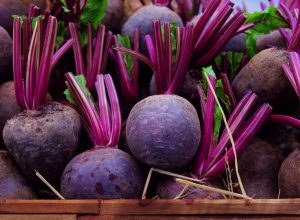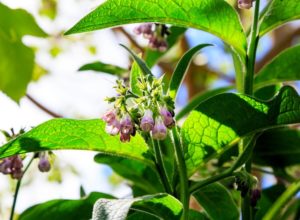July Gardening Guide – Cool Climate
What to Plant in July?
Its cold, really cold, and frosty this month, even though we’ve passed the midwinter shortest day. Amazing how things still grow (even weeds like chickweed) and thrive in these conditions. Brassicas and parsnips get sweeter after a good frost as some of their starches get converted to sugars to protect the plant cells from extreme cold.
Its still great timing to source, or divide and share, perennials such as rhubarb, asparagus, Jerusalem artichokes, globe artichokes, chives, garlic chives, horseradish, potato onions and shallots.
And when you’re thinking about berries and fruit to plant, don’t forget that cane fruit like raspberries, currants, gooseberries and brambles (like silvan berries and logan berries) are easy peasy to propagate. If you know someone with any of these, chances are they’d be happy to share some cuttings, suckers or thinnings from their berry patch.
In the annual veg camp, the same guys as last month are still good to go: spring onions, radishes, broad beans, peas and English spinach. You can start preparing beds for potatoes too, and begin planting them towards the end of the month if your soil is reasonably well drained.
Maintenance
It’s a good time to clean and tidy your strawberry beds, and make an assessment about whether to keep your plants or get a new batch. After around 4 years of growth, most strawberries get an aphid-bourne virus which doesn’t affect their leaf growth, but reduces their fruit productivity. So if your plants are just a few years old, by all means snip off the runners and give them to friends, family or the school garden. But if your patch has been there for 4 years or more, it’s not a bad idea to remove all the plants completely, refresh the soil with some yummy compost, and plant new certified virus free plants that are sold quite cheaply bare rooted from nurseries at this time.
If you’re not quite ready to give up your plants just yet, you can give them a pretty brutal haircut (gather up and snip off all the big leaves). This will reveal hiding places of slugs and snails – a bonanza if you have chooks or ducks. Once the slimy buggers are dealt with, tuck your strawbs in for the rest of winter with a nice blanket of compost or straw mulch. Don’t cover them too thickly with a heavy layer, or they may rot. But an airy blanket will keep them happy till they send out new leaves in spring, and you’ll be feasting on sweet fruit by Christmas.
Pests and Diseases
- Check your brassicas, especially broccoli and Brussels sprouts, for infestations of grey aphids. These yucky little creatures can explode in numbers very quickly in a few mild weather days, and often do so just as your about to harvest your precious winter food. They often bide their time on the backs of leaves – if you find a small outbreak you can pick the leaf off, or squish and wash them off with a jet of water.
- Quite often the aphids will attack one plant much more heavily than the rest, revealing a slightly weaker or more stressed individual. You can remove these weaklings, taking (hopefully) the source of an infestation with it. Chooks don’t mind a few aphids on their salad!
Harvest and Preserve
- All the brassicas and many ground-stored winter root veggies are spectacular at the moment. Many of these (e.g. cabbage, radish, carrot) make wonderful companions in fermented preparations, such as kimchi or sauerkraut.
- Citrus fruits also begin to shine in winter, with lemons beginning to make a good show on backyard trees. As your hens start to lay after their winter break, it becomes prime time for the delectable lemon curd – a perfect combo of lemons, eggs, butter and sugar!
- Kiwi fruit are also ripening now . . . although they don’t get soft on the vine. To work out when to harvest them, pick a sample and cut them in half. If the seeds have gone black, or dark brown, they are ready to pick and will soften up after a few days on the kitchen bench. If the seeds are still pale, they should be left on the vine a bit longer.
Permaculture Principles #6: Design from Patterns to Detail
- Designing a new garden can be daunting, but this months permaculture principle gives a huge clue that makes things easier: design from pattern to detail.
- You might have a list of plants you want: a lemon tree, apple tree, herbs, annual veggies like tomatoes, zucchini, pumpkin etc, and perennial veggies like artichokes, rhubarb, asparagus, and a grape vine. But – how do these all go together??
- Start with a map – even a rough sketch is ok – of the area you have to play with. Decide which areas have the best sun, access, aspect and so on. Then mark in really broad terms the areas, or zones, which will be used for different things. Eg, fruit trees along the southern boundary so they don’t shade the rest of the space, annual vegies where its nice and sunny, composting and worm farm setup where its shadier and not so good for growing things.
- Basing this concept layout on simple geometric shapes is handy. For example, a circular path in the middle of your space can help to simplify what would otherwise be a tricky irregular space. The funny shaped corner bits that are outside the circle can be filled in with trees, shrubs or perennials. Square or linear shapes, or organic curves and paisley shapes can do the same job.
- Always put things that you want to pick often, such as herbs and annual veggies, in places that are easy to get to (near pathways) and preferably close to your back (or front) door.
– Christina Giudici, Food in my Backyard (FIMBY)








